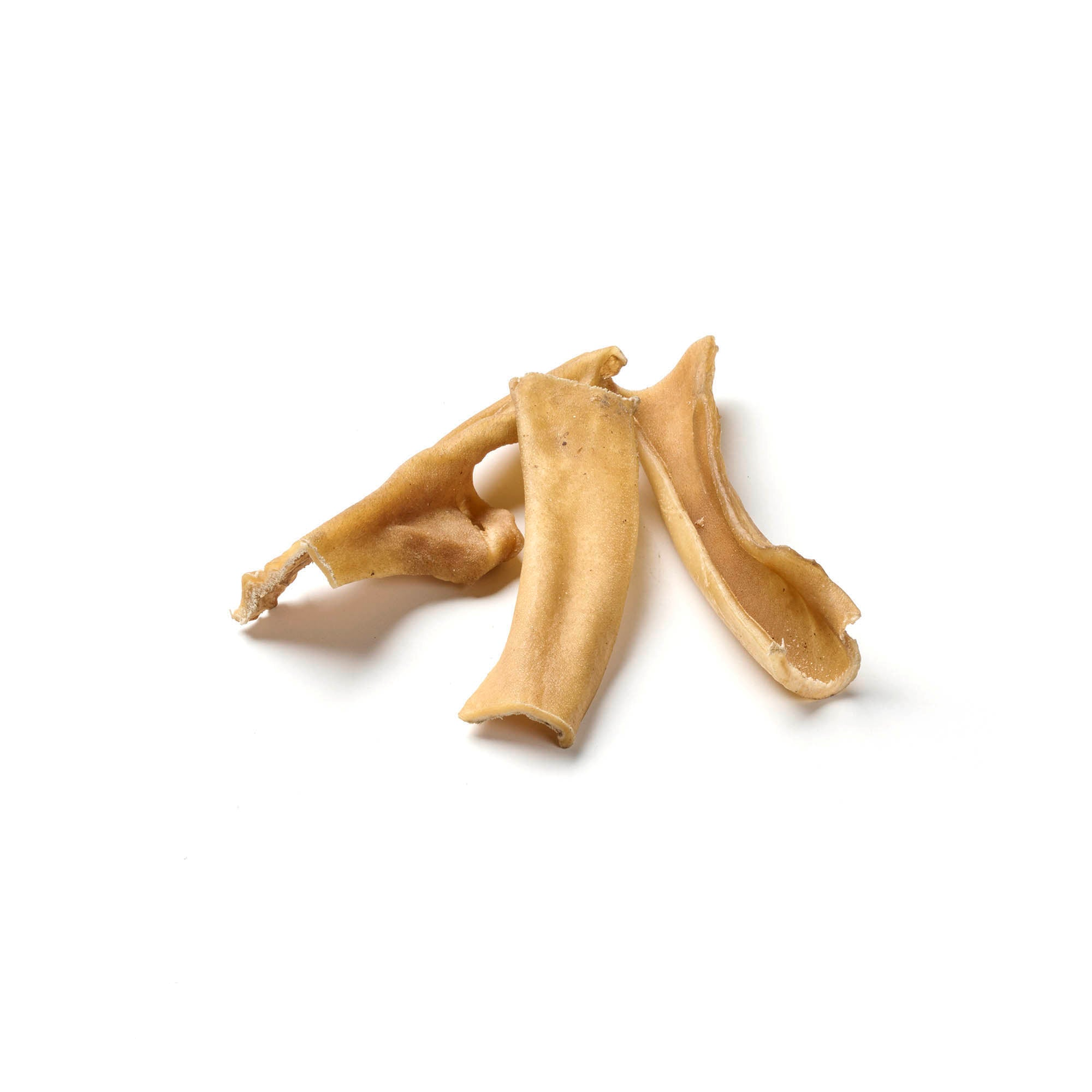
Collar or chest harness - which is better for my dog?
Share
Visual criteria can of course also play a role, but they should not be the deciding factor. Instead, it is advisable to focus on the needs and health of your four-legged friend.
Content: Collar or harness?
High quality dog snacks to pamper your dog, now available!
The dog collar
Let's think about why we put a collar on humans, dogs or other animals. The purpose of a collar is of course to give us humans control over the dog. Attaching a leash around the neck makes perfect sense from this perspective. The neck is an extremely sensitive and extremely important part of our body, not just for us humans, but for most mammals. Dogs that are attached to their necks are simply easier to control.
A dog collar can therefore be an advantage when it comes to teaching the dog to walk on a leash . The collar is better suited for this than the chest harness.
It only becomes dangerous when the dog is given more freedom, for example with a leash. This is where the danger lies, because dogs often forget their collars and run off at full speed, only to be stopped abruptly.
Anyone who understands the basic principle of a gallows should be aware of how dangerous a collar can be. Not only the important cervical vertebrae, but also the larynx and thyroid gland are located in the neck. An injury to these organs or even the vertebrae can have very serious consequences. This applies not only to sudden, emergency braking, but also to dogs that constantly pull on the leash and can get various inflammations in the neck area. Of course, the breathing air that flows through the neck is also not unimportant and can be constricted by a collar that is too tight. This is especially true for very thin show leashes, the use of which is more than questionable.
Dog collars have their uses, but they also have their pitfalls and they are not simply a necessary accessory for walking the dog .
Dog collars are useful for older dogs who no longer have to jump around wildly and have not pulled on the leash for years, or for training them to walk on a leash, also known as “heel”.
In addition to the intended use, the workmanship and the right size should also be taken into account. There should be about two fingers' width of space between the dog's neck and the collar. But they should not be too loose either, because if dogs panic, they will quickly wriggle out of a collar.
By the way, there are special dog collars for greyhound breeds, as these slim dogs with their narrow heads can easily slip out of normal collars.
Dog chews available for happy and satisfied four-legged friends!
The chest harness for dogs
The advantage here is obvious. Chest harnesses do not hold the dog by the neck, but rather by the entire chest area. This means that neck injuries cannot occur. However, there are other things that must be taken into account. The prerequisite for a harness is that it fits well.
A chest harness that is too tight can also lead to injuries, although not as critical as neck injuries. The main danger is that the dog will chafe or that the spine or lungs will be too constricted. Here, too, there should be enough space for the four-legged friend. At the same time, of course, not too much. Chest harnesses are therefore often individually adjusted or at least can be adjusted to the size.
It is also important that the dog's shoulders are free and that nothing rubs against the skin or fur. Good chest harnesses are usually sufficiently padded for this. Metal rings or plastic fasteners must also not rest on the fur.
However, once you have found the right chest harness, the dangers of a collar are eliminated. The weight of your four-legged friend is now evenly distributed across the entire chest area, which is a small disadvantage for particularly strong dogs. Because they naturally no longer feel any pressure on their necks with a harness, they can therefore pull even harder on the leash.
In this particular case, head harnesses, so-called “haltis”, are also an option. However, these require special experience in dealing with dogs and training them! They are similar to horse harnesses, but again have the disadvantage that the neck area is at great risk if used incorrectly.
What is better when?
Collars and harnesses have advantages and disadvantages, but also different areas of application. It is perfectly fine if the dog is only walked a short distance on the collar. Or if the dog can walk on the leash so well that it does not pull. This is usually not a problem, especially with older dogs.
And training to walk on a leash also works better with a collar. It makes sense to separate this training from normal walking. The dog collar is used for training. But it is important to be sensitive to the control that a dog collar gives you. During training, the leash should not be pulled too abruptly. If you are unsure how to train your dog to walk on a leash , watch the video.
For normal walks, a chest harness is a good option. Perhaps in combination with a leash. This gives your four-legged friend space to jump around.
Collars, on the other hand, are very problematic if the dog shows strong leash aggression and constantly pulls on the leash like an ox. The use of a tow line also rules out the simple dog collar. Due to the large amount of space that the dog has with a tow line, the risk of injuries to the cervical spine is particularly high. You should also use a harness on a bike tour - ideally with a leash holder that is attached under the saddle. This is the safest option - for both dog and owner.
Fearful four-legged friends should generally avoid collars, because they will quickly pull the collar off in a panic. The same applies to young dogs who are simply too playful and inexperienced to be able to wear a collar safely.
Conclusion
As we have learned, both dog collars and harnesses have their purpose. If used correctly, a dog collar is very useful and is by no means cruelty to animals. However, inexperienced young dogs and dog owners in particular should be aware of the dangers of a dog collar. It is probably best not to choose one option, but simply to have both ready for the respective purpose.
First-class dog chews for happy sniffing noses available here!













